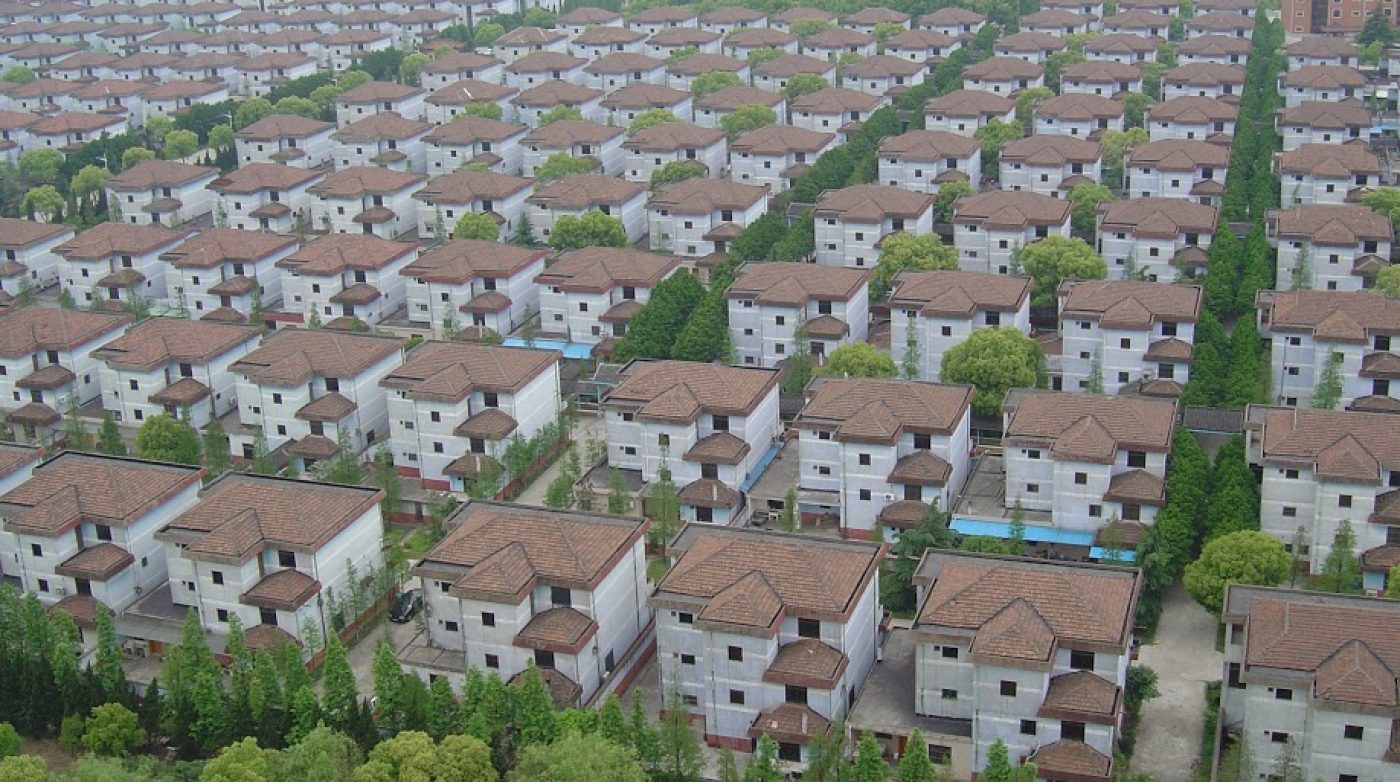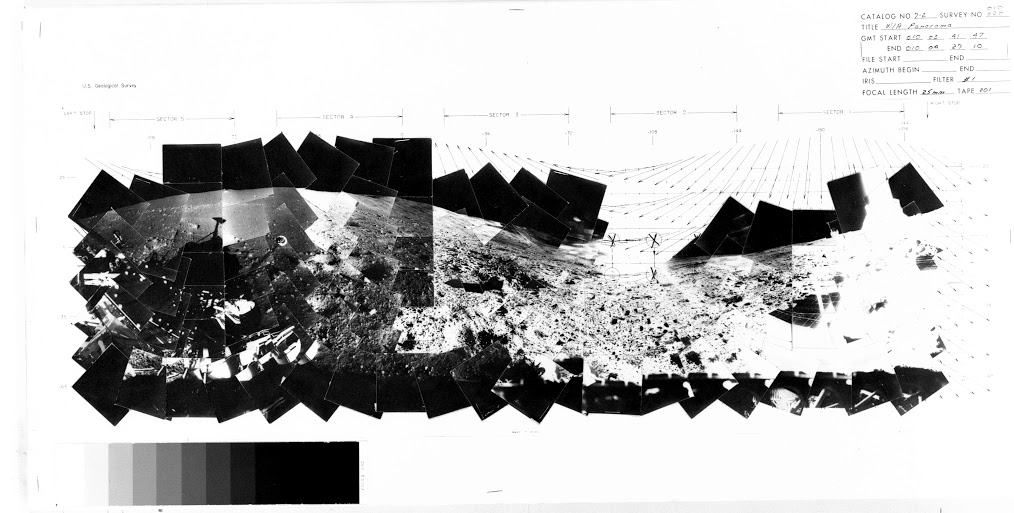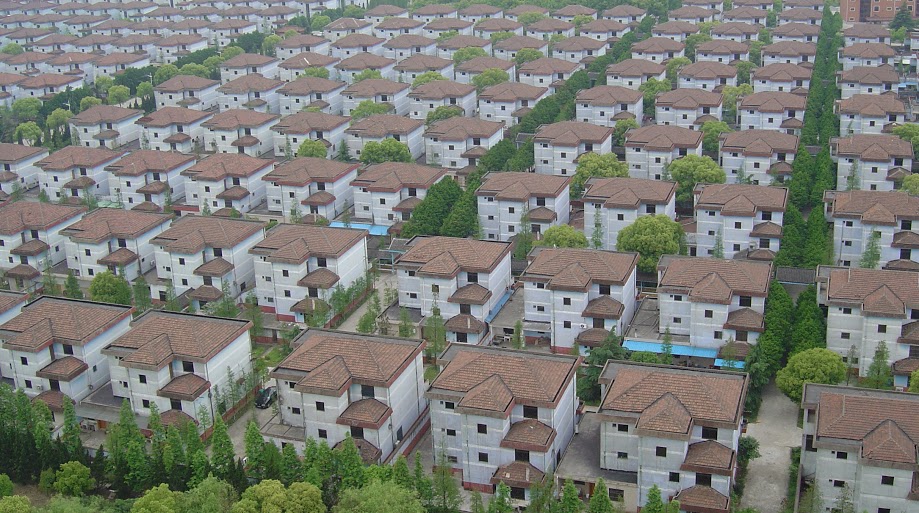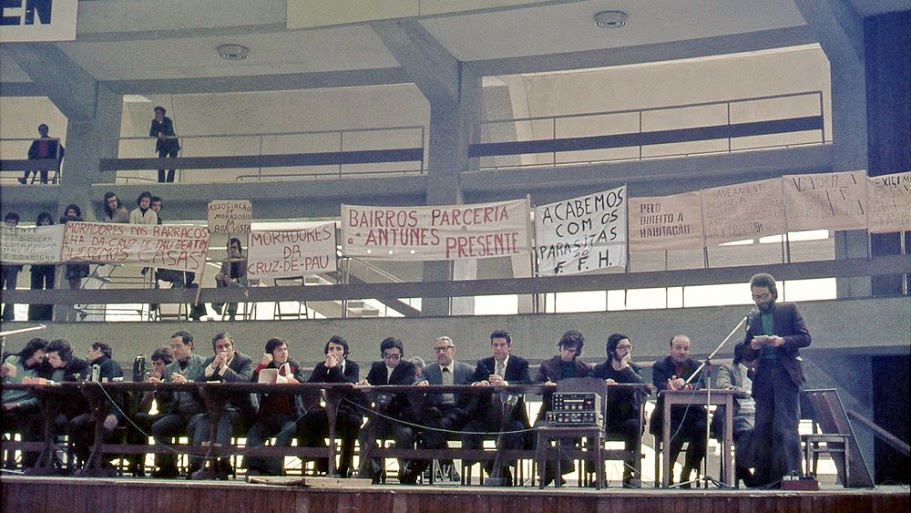Rearticulating the Problem
Interview with Adrian Lahoud

The political left has had a rough few decades; everything just seems to be going in the other direction. Instead of romanticizing what it would be like ‘only if’, we’d better get to work on figuring out how to turn the engine of progress around. Volume spoke with Adrian Lahoud about the stakes of architectural research within the academy today and how it might contribute to moving towards the horizons of the left.
You recently launched a Masters of Architecture degree in Research at the Royal College of Art (RCA). What were your motivations?
There are many motivations. Firstly, knowledge has come to take on a different importance in contemporary economies, which leads to changes in the infrastructure of knowledge production, since they are no longer confined to institutional settings in the same way. The relation between the institution and the field demands reinvention – this is fundamental. Second, we have a greater sense that alternative forms of knowledge are crucial and that epistemic diversity is an important arena of social struggle. Third, the distinction between the abstract and the concrete is more difficult to sustain when the most abstract forces make claims on the most intimate spheres of human life. Consequently, we must see theory and practice as related forms of action – reality has its own abstractions, which must be theorized and vice versa – every practice is latently theoretical while theory is never without its own practical implications. The choice of emphasis for us is purely tactical and pragmatic. Fourth, the separation of technical, empirical or quantitative research from qualitative research – something that is consistently reflected in the status and the organization of labor within architectural education and architectural practice – must be overcome. The frontier of scientific calculation is ceaselessly shadowed by the colonial expansion of the market into new territories. Systems of calculation and quantification can’t be extracted from the ethico-political paradigms they are called on to serve – as we see in the relation between the technosphere and biosphere, or between financial debt and human subjectivity. Finally, and most importantly, we recognize that there is an urgent need to grasp the propositional nature of design in a new way, to see its capacity to re-organize social struggle by displacing demands articulated in speech or in language into forms, into systems of spatial organization, into materials, graphic forms of representation, etc. Design is always a provocation to re-align the coordinates of a problem, to re-organize dialogue, and crucially, to contribute an impersonal form to systems of power.

NASA Space Science Data Coordinated Archive
Academic institutions are the traditional site of research. Yet you see research being carried out in practice, as a practice. What does it mean to reflect this view back into the academy?
The key question is to create new forms of encounter between the academy and its outside, whatever that might be. Institutions have different distributions of potential and constraint, which allows a certain amount of freedom to engage with challenges outside of the institution according to alternative logics; to constitute new kinds of questions or to create alternative entry points to existing ones. The RCA is a unique context. It is unbelievably agile with a history of design innovation on one hand and this very liberating anarchic anti-establishment energy on the other. And yet ironically, it feels less indebted to its history and therefore less burdened by the arcane filiations that organize dispute in so many other schools.
Perhaps the greatest advantage that institutions confer is the ability to sustain inquiry over long periods of time. Innovation takes time, having something important to say takes time, and so there is still a possibility within the institution of constructing a project, an arc of research that brings new thoughts and actions into existence. This is something that is more difficult in the profession. Even if there are more and more attempts made to do it, the constraints are different. It is a matter of thinking: knowledge for what and for whom? How do we know what we know, and why do we know it?
Nonetheless, we encourage live projects, projects that take existing demands, questions, and situations as their starting point, projects that whose speculative ambition is sharpened against some kind of resistance, some kind of test. What it means to say that something is ‘live’ is simply that the site of knowledge production exists in an encounter between the institution and its outside, and that this outside puts every claim at risk. In our view, the problem for architects is not only to interpret the world but to change it, and in order to change it, understanding the institutional constraints imposed on the architects and architecture itself becomes an important point of reflection. To enter into research at the RCA then is to cultivate a critical perspective on the institution, its pedagogy and the production of architecture.
What sorts of practices and concerns are you aligning the program with?
Architectural research is directed to both disciplinary and extra-disciplinary spaces of action. In the first case we take the inherently projective nature of the architectural project as a heuristic whose purpose is to re-organize existing social and political questions through design. In the second, we acknowledge the urgent need to bring architectural knowledge and spatial intelligence to bear upon legal, activist and humanitarian issues.
To this end we have decided to launch with three focus areas. Sam Jacoby is running the City Design section which is directed toward the design of new cities with a renewed seriousness, where a social and political imagination is cultivated to break the stranglehold of existing templates. David Burns is running the Architecture & Media focus, which will look at the role of new forms of media, calculation and visualization on the environment using live case studies of environmental transformation, climate change, urban conflict and migration. Finally, Godofredo Pereira is running the focus on Social Movements, which is really the very first research project of its kind. In architecture the imagination of the left has, for the last twenty-five years, been organized according to the master metaphor of top-down vs. bottom-up, with the left aligning with so-called bottom-up and grassroots movements that organize themselves around concepts like participation. Leaving aside a certain historical amnesia here, the automatic attribution of a moral value to anything participatory or collective isn’t just part of the problem; it’s what sustains it. How is it that a couple generations of architectural imagination have been colonized by these kinds of tropes? But already one can sense that things are changing. We have no choice but to become less afraid of scale; the planet has become a design problem.

Photo courtesy of and by Oscar Tenreiro. http://oscartenreiro.com
The question of scale goes to the question of what tools are necessary for a (research-based) architect.
In my personal research on the question of scale, I was interested in the way architects use scale to describe problems or questions rather than systems of proportion. For example when architects say domestic scale – even if they don’t know it – they are referring to histories of gender construction, to the emergence of the nuclear family, to the sexualization of childhood, etc. I was interested in the way that these problems become part of a kind anonymous, common inheritance that structure architectural knowledge and architectural labor. They become ‘common sense’ formulations that act like gravitational force fields on our attention. There is an entire vector of power that extends from here to being told that we are supposed to answer certain kinds of problems because they are supposed to be the most relevant, which is something we should be suspicious of because it’s a kind of intellectual slavery.
There is something of profound political importance within pedagogy, which is to bring students to the point where they can construct a question that refuses the form of the question as it is given or presented by common sense and common knowledge. Architecture and urban design is littered with common problems: ‘sustainability’, ‘vibrancy’, ‘well being’, etc. The acceptance that these questions are either relevant or well posed often astonishes me. And yet a well-posed question is an incredibly powerful thing in that it acquires an impersonal form, passes into anonymity and continues to solicit attention and labor. So the art, in this case, is to understand how architecture is able to raise problems in an entirely unique way, and to deploy this potential productively.
Insofar as the problem, as you’re saying, prefigures its economy of solution, to what extent should it be a point to critique the concept of a ‘problem’ itself?
So in the history of epistemology and philosophy, what is a problem? Traditionally speaking, a problem is always a kind of negative situation, where our job is to conceive of a better situation – the solution – and figure out how to go from the bad to the better. This has been described very elegantly in the work of Patrice Maniglier; he points out that in the 20th century French epistemological tradition, there is an attempt to formulate a positive concept of a problem and a gradual shift in the terrain of judgment to emphasize the aspect of power I mentioned above. This moves a problem from being either true or false to being relevant or irrelevant. More importantly, it allows us to see the problem as a positive differential agent, a generative force rather than a lack. I always say that good problems are precious things to waste; that what you actually want to do is keep the problem alive, just on new terms.

Photo: Panoramio/udo54
So instead of problem solvers, architects should perhaps see themselves as conflict reorganizers. What are the implications of this?
You don’t take an ethical position when you treat your job as fixing the world, making it a better place. An ethic emerges when you take sides; not only on what you want to improve but also what you’re prepared to make worse. So, you know, there’s a beautiful phrase by the Invisible Committee: “to acquire the art of conducting conflict”. Isn’t this is basically the definition of urban design or architecture? I mean, that’s really what you do: conduct conflict, according to alignments you’re more-or-less aware of, more-or-less committed to. Obviously projects never reconcile all of the conflicts inherent to a problem; all they do is hold them in a new state of coexistence, it seems to me that if we start with this as our opening assumption, a number of things will follow.
What does it mean to conduct research in architecture along these lines?
To conduct research in this way means to place focus on the relation between architecture and forms of life. Now this is a kind of commonplace assertion. Architecture has always been motivated by this idea, which at its very least speaks to a belief in some kind of traffic between the environment and the soul. But it’s also one of the great intellectual voids in scholarship, to which various fig leafs both large and small have been applied. I find that extraordinary, that the very basis of the discipline of social and political instrumentality is so poorly theorized and misunderstood, caught in a dialectic of either total deficit or excess. To escape the dialectic we should acknowledge the profound contingency of all architectural interventions and see the building entangled within systems of control, of incentives and punishments that secure its function and on which its instrumentality politically depends. So at the very moment where more built material is coming into existence than ever before in human history, we are in the curious position of having to re-invent or even re-discover how to make a claim about design and its relationship to life. And I think that if we start looking at this carefully, we find ourselves having to pay attention to the emergence of new protocols of life, new institutional forms, new social tendencies through the frame of an architectural project.

Gaza Workshop, Architecture & Media
So it’s in this sense that social movements become a subject for architecture research.
They are not the only ones, but they are particularly interesting, and architecture has been slow among other fields to realize this and to try to harness the promise they contain. A fascinating question emerges: How can we rethink processes of urbanization from the perspective of social movements, such as the ones that have taken place around the globe in the past decade? The last time this happened and at a large-scale was mid-20th century, during the postcolonial and post-independence movements. I think the really genuine question now is to ask: what are the other options for an urban project? To say that urban design is condemned to operate within the spaces made available by private capital is not enough; this is a time of systemic crisis. This is why we are forming a new network of people working on social movements from Argentina, Brazil, Venezuela, Jordan, Palestine, Spain, Greece and Portugal, to see what the consequence of these new forms of life could be for the built environment. If architecture is always contingent on a field of forces, then our role is to distinguish between the spaces of sedimentation and the spaces of sensitivity, to decide where to deploy our efforts, and to ask whether new contexts for design are emerging. Architecture has something very precious to contribute, to help create new vectors for desire and to give these vectors some durability.
The emancipatory question is always not one of revolution but of the day after.
In a globe where 50% of capital is tied up in real estate, the really interesting thing is to flip the question about urban design around and ask: what is a social movement? Something that is neither captured by the state form or by local politics but works transversally to all of them, even if it adopts both forms when pragmatically required. But exactly how they operate is absolutely specific and unique. Only after understanding that can we ask: what would an urban design or architectural practice of contemporary social movements look like?
There’s an amazing acknowledgment in a lot of contemporary social movements that the built environment needs to be thought in new ways that are in line with their political motivations, foregrounding questions of social and spatial justice. It’s a really interesting moment in history; we’re not the ones asking these questions. Not the only ones at least. So what would it be to organize and operationalize a critical perspective within the parameters of urban design, to set into motion processes directed towards alternative political ends? That is to say – an alternative that is beyond its reduction to real estate speculation.

Photo: Sérgio Fernandez
What are the sorts of research outputs or design objects do you see as contributing to social movements of the left?
You know, the phobia of social engineering in architecture is a joke. It imagines a natural state of life, but we live in the most highly engineered societies; from our technologies to our souls, everything has been through a long process of design and manufacture. Timothy Mitchell has this beautiful phrase: “the future’s engineering works”. The idea is that futures need infrastructure to bring them about. What are those infrastructures? Well, much like physical infrastructure such as rail lines and roads, the future is engineered into existence by legal contracts that commit you to deliver things at a certain time, promises that you secure against assets, guarantees of return on investment, certain kinds of financial models, etc. So the design object or the output is not our immediate concern; our immediate concern is to see if there are spaces in the world where the future’s infrastructure is being designed in another way. We want to locate ourselves in these spaces. So it is not like the future is a question of architectural outcome A or architectural outcome B, yet. Rather, it’s to acknowledge that societies are organized to secure future A and prevent future B. So the contemporary struggle is not a struggle over outcomes, not yet; it’s a struggle over the infrastructure of security.
It’s contract-phrasing A versus contract-phrasing B. We need utopian lawyers, basically.
[Laughs] This has nothing to do with Utopia, though. The propositional role of design is to displace the form of the problem, to have it articulated according to space and materiality and organization. Utopian/dystopian thinking recapitulates the old problem/solution dialectic. The idea behind taking the social movement rather than the idea of the community as the problem, as the question of urban architecture, is because they represent a disturbance in established forms of working. We want to try to see what’s possible if we align ourselves with those conditions